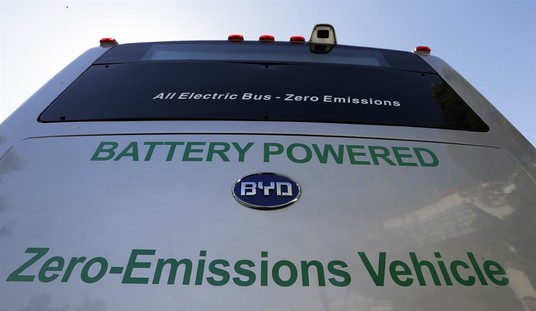Finally, finally, we know how to avert a second wave of the disease. And not a moment too soon.
Tell Fauci to put on some gloves and hip waders, grab a bunch of plastic baggies, and head down into the nearest manhole. The answer lies below.
Stories have been, uh, trickling out for weeks about the promising possibility of detecting new outbreaks early by analyzing a local community’s … output, shall we say. The idea isn’t novel, as scientists have used sewage for years for all sorts of epidemiological purposes. Stat noted in a story last month that one biotech start-up had taken to scrutinizing sewage to measure the extent of opioid use locally. Some European scientists have examined sewage to gauge the spread of antibiotic resistance via wastewaster. And, yes, other scientists have tracked viruses in the stuff.
Once it became known that people infected with coronavirus shed it in excrement, it was a logical next step to try to detect new outbreaks by tracking the amount of aggregate virus in community wastewater. They did it in February in the Netherlands, the Times explained in a story a few weeks ago, with noteworthy results: “The researchers then went to remote towns without any known cases of Covid-19. They discovered the coronavirus up to six days before the first confirmed cases were found there.” French scientists tried the same thing in Paris for several weeks throughout March and early April. Another striking outcome:
For the Paris study, Wurtzer and his colleagues sampled wastewater from up to five Paris-area plants twice a week between 5 March and 7 April. They noted “high concentrations” of viral RNA several days before 10 March, the first day that Paris recorded multiple deaths from COVID-19. Concentrations continued to rise a few days ahead of an acceleration in clinical cases and deaths in Paris. “We have a very clear curve that precedes the curve in numbers of clinical cases, and now with confinement, we see a flattening of that curve,” says Laurent Moulin, a study co-author and a microbiologist also at Eau de Paris. He estimates it took between a half a day and 3 days for the sewage to move from toilets to the treatment plants.
It’s like peering into a crystal ball. Except in this case we’re peering into a toilet.
The latest study comes from Yale and involves wastewater from New Haven and surrounding communities. Scientists wanted to know how well they could predict the rise and fall of confirmed cases in the community based on the rise and fall of the amount of virus in what they delicately describe as “sludge.” You ready?
SARS-CoV-2 RNA concentrations in sewage sludge were a leading indicator of community outbreak dynamics over hospitalization and compiled COVID-19 testing data. SARS-CoV-2 RNA concentrations led hospital admissions by 3 days and COVID-19 cases by 7 days. Hospital admissions to Yale New Haven Hospital from the four towns served by the wastewater treatment facility both rose and fell more slowly than the observed RNA concentrations. The rates of SARS-CoV-2 RNA increases and decreases were similar to the COVID-19 testing data, and reflect the very concentrated outbreak that took place within New Haven and its neighboring towns. The strong correlation between the virus RNA and COVID-19 case data provides an approach to independently evaluate the local SARS-CoV-2 testing rate and to estimate the number of new cases. While the results here demonstrate the potential utility of such an approach, we note that these relationships could be treatment plant specific, as primary sludge process trains are not uniform, and that compiled COVID-19 testing is prompted by symptoms, thus underestimating the true number of cases.
If that’s too jargon-y, feast your eyes on the respective curves they’re describing.
This graph is amazing. It shows that measuring #SARSCoV2 levels in municipal sewage almost perfectly predicts forthcoming #COVID19 cases with a full week's notice (R=0.994). It's one of several discoveries in this new study from @Yale: https://t.co/hZVdXebx2D. C-19 is #InThePoop pic.twitter.com/shNzTKYoYP
— Brennan Spiegel, MD, MSHS (@BrennanSpiegel) May 26, 2020
They’re nearly identical. The amount of virus in the “sludge” gave them almost perfect insight into how many new cases there would be a week later. The implications are obvious. By tracking the presence of virus in sewage day to day, local health authorities can potentially detect new outbreaks as they happen rather than wait for a bunch of sick — and contagious — people to show up at doctor’s offices days after they’ve already unwittingly begun infecting others. That would be especially useful in communities that are poor and might not have the same access to conventional PCR testing to warn them that the virus is spreading locally. Spotting an increase in the volume of virus in dookie would also provide notice to nearby hospitals to get ready and could give federal and state officials time to ship testing components and PPE to that community. And of course it would allow the local government to warn residents that the virus is surging and that they should immediately practice stringent social distancing to reduce the risk to themselves. With an early alarm like that, people might be able to choke off an outbreak before it gets going.
Remember how exciting that Kinsa “health weather” map was because of its potential for detecting infections early? This is even better. Kinsa draws conclusions based on a single symptom (fever) among a select population (people who own Kinsa smart thermometers). It misses people who don’t use those thermometers and people who are asymptomatic. And since many COVID-19 patients are infectious before they show symptoms, even Kinsa’s technology may be picking up symptomatic cases too slowly to meaningfully retard a developing outbreak. Sampling wastewaster, by contrast, means sampling the entire population, including asymptomatics, and logically should be able to detect community spread as soon as viral shedding has begun. As an aggregate measure of the virus’s presence in a community, it’s better in every way.
I don’t mean to overhype it. All I’m saying is that we just might sh*t our way to suppressing this contagion.
Let that thought encourage you as we wait for a vaccine. In lieu of an exit question, here’s Scott Gottlieb yesterday making a point I hadn’t heard before, that although China is competitive with western countries in the race to be the first to develop a vaccine, there’s reason to believe western vaccines will provide more robust protection from COVID-19 because of their innovations.
U.S VACCINE RACE: @WhiteHouse officials and public health experts appear optimistic the U.S. will be able to develop a #COVID vaccine quicker than China.
Watch as Robert O'Brien and @ScottGottliebMD explain why —> pic.twitter.com/ec2dHtxg9v
— Face The Nation (@FaceTheNation) May 24, 2020








Join the conversation as a VIP Member